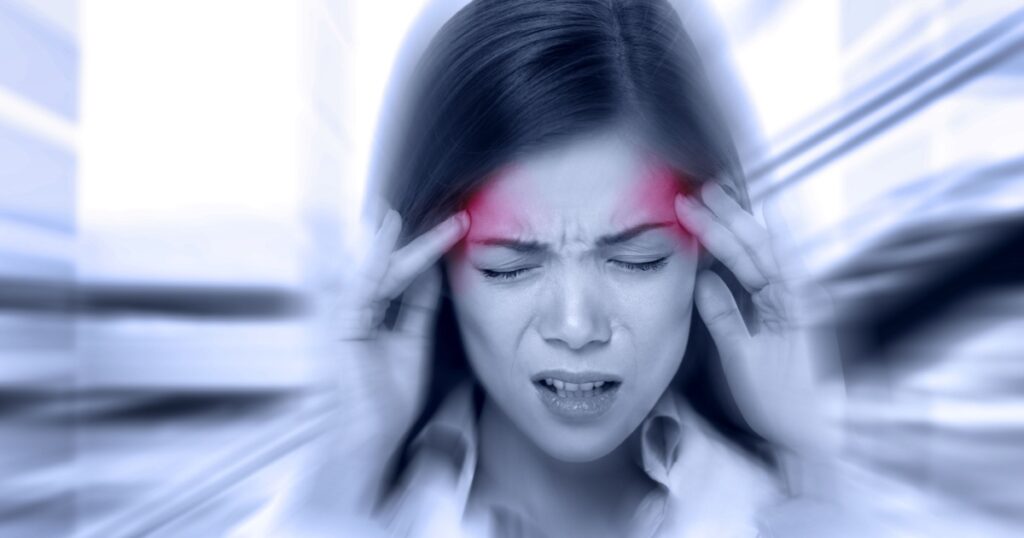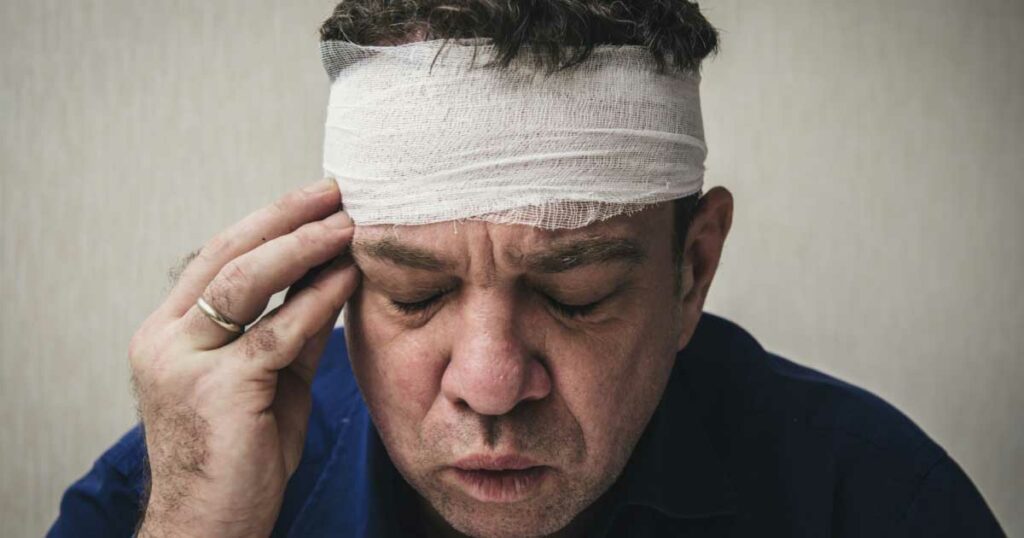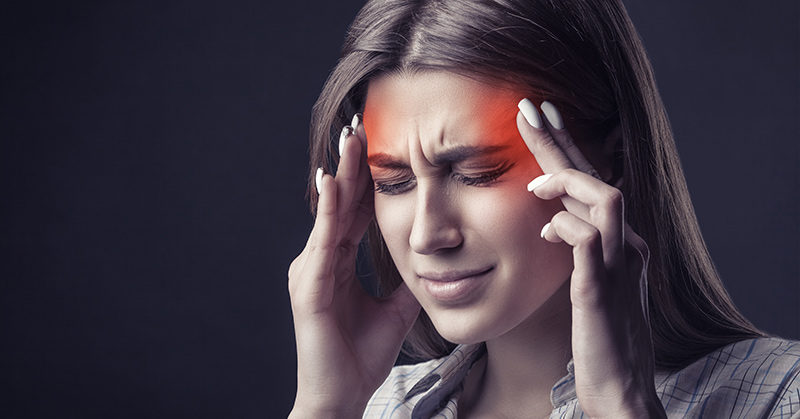Headaches are extremely common. Nearly every person on the planet will experience one at some point in their life. In most cases, headaches are nothing to worry about and will go away on their own. There is, however, such a thing as a dangerous headache. These headaches, which are often severe and persistent, could be a sign that something more serious is going on.
It is important to understand the difference between a normal and a dangerous headache. This way, you will know if and when you need to see a doctor. This knowledge is vital because it could save you or a loved one’s life.
The Types of Headaches
Headaches can vary significantly in terms of their intensity, location, frequency, and cause. In general, there are two main types of headaches:
1. Primary Headaches

This is when the headache itself is the main problem. It is not a symptom of an underlying disease or condition and is typically not serious. Although these are not dangerous headaches, they still can be painful, and in some cases, debilitating.
Your brain can not actually feel pain, so the discomfort you are experiencing actually comes from pain-sensitive areas around the brain. These areas include the nerves, blood vessels, and muscles.
Primary headaches can be broken down into several smaller categories. They are as follows:
- Migraine headaches: This type of headache is usually located on one side of the head. It can last anywhere from two to 72 hours. People who experience migraines often also experience nausea and vomiting, and sensitivity to light or sound. Most migraine sufferers describe the pain as throbbing.
- Tension headaches: These are sometimes called “hatband” headaches because the pain typically circles the head as if you were wearing a tight hat. They can last from hours to days and can co-exist with a migraine. Sometimes, one can trigger the other.
- Hypnic headaches: These headaches are rare, and typically occur in individuals between the age of forty and eighty. They happen exclusively at night, tend to happen at the same time every night, and typically last between sixteen and sixty minutes.
- Cluster headaches: This type of headache is relatively short-lived, and tends to last between twenty minutes and two hours. It always occurs on one side of the head and is associated with other symptoms such as a stuffy nose, tearing, and enlarged pupils, or a droopy eyelid. Cluster headaches tend to occur many times a day, for a period of several days to weeks [1].
2. Secondary Headaches

These are dangerous headaches. A secondary headache is caused by another condition that triggers pain-sensitive areas around the neck and head. Although they are rare, they are much more serious.
A secondary headache could be the sign of a number of dangerous conditions. It is important to know the symptoms of these headaches so you can get treatment right away [1].
Read: 11 Best Foods to Boost Your Brain and Memory
10 Signs of a Dangerous Headache

The following ten types of headaches are secondary headaches. If you experience these symptoms, you may have a more dangerous headache, and should see a doctor right away.
1. A sudden painful headache with vision problems

If you have never had a really bad headache before, but are suddenly struck with a very painful one that disrupts your day, it could be a sign of Giant Cell Arteritis (GCA). GCA is a disorder in which the arteries running through your head become inflamed.
The most common symptoms of GCA are:
- A throbbing, persistent headache that occurs in the upper neck, behind the eyes, and at the back of the head.
- Affected areas may feel tender to touch, and may be accompanied by a burning sensation. Your scalp may also feel tender when you touch it with a hat, comb, or eye glasses.
- Your vision may be blurry, or you may lose your vision while the headache persists.
It is extremely important to see a doctor about this dangerous headache right away, because GCA can progress to blindness and stroke if you don’t treat it [2].
2. Thunderclap Headache

The primary feature of this dangerous headache is that it comes on suddenly and severely. In fact, many people who have experienced it describe it as “the worst headache they’ve ever had” [3].
A thunderclap headache is dangerous because it is usually a symptom of a subarachnoid hemorrhage [4]. This causes your brain arteries to swell. These arteries ultimately rupture and bleed in and all around your brain. It can lead to a stroke, or can be fatal in and of itself [5].
Other symptoms that may accompany a thunderclap headache include nausea, vomiting, and mental confusion.
3. A Progressive Headache, with Weakness or Numbness on One Side

Your body is always pumping blood to and from the brain. Blood returns from the brain to the heart through venous sinuses. When these sinuses become clogged, it causes Cerebral Venous Thrombosis (CVT). This can lead to bleeding in and around the brain, and is a major cause of strokes.
If you have a persistent headache that gets gradually worse over a few days for up to a week or more, you may have CVT. In fact, a headache like this is usually the first symptom of CVT [6].
People who have had this kind of headache typically describe it as a sharp pain on one side of the head. Some also experience speech and vision impairment, as well as sensitivity to light and sound. Many people also often describe a feeling of weakness or numbness on one side of the head, down to the shoulders and arms.
4. A Headache with Neck and Face Pain

Your carotid arteries are on the side of your neck, and they deliver blood to your face, ears, neck, and head. If you experience a sudden severe headache with pain in your neck or face, you may have carotid artery dissection (CAD).
CAD occurs when one of those arteries has a tear. This allows blood to enter and fill up the space between the arteries, which separates them. This blood clots, which prevents fresh blood from flowing to the heart and brain, eventually causing a stroke [7].
5. A Headache After Risky Sexual Activity

One of the most common and persistent symptoms of HIV is a headache. If you know you are at risk for contracting HIV, and you are experiencing migraines or tension headaches, it could be a sign that the disease is in its initial stages.
A secondary headache, like a sinus headache or a headache associated with meningitis could also be a sign that your immune system is impaired because your HIV has progressed [8].
6. You Have a Headache and a Stiff Neck

If your neck feels excessively stiff and you’re experiencing a “shooting pain” headache, you may be suffering from meningitis.
Meningitis occurs when certain membranes that cover the brain become inflamed. Because of its proximity to the brain, it can be fatal. Nearly one hundred percent of meningitis patients report experiencing painful headaches, a stiff neck, fever, and feeling disoriented [9].
Read: What Are Cervicogenic Headaches? How To Avoid These Headaches
7. You Have a Headache After an Injury

If you suffer any kind of head injury, pay close attention to how you’re feeling over the next several days. If you begin to experience headaches within ten days of the incident, you likely have a concussion [10].
Concussions are not necessarily life-threatening, but the symptoms can impair your quality of life. In rare cases, a concussion can cause a blood vessel in the brain to rupture. This can cause blood to quickly fill up the area around the brain.
This can compress the brain tissue and lead to additional brain injury, unconsciousness, or even death [11].
8. You Have a Headache During or After Intercourse

Many people experience a headache during the peak of sexual intercourse. This type of headache is not normally a cause for concern, however you should still see a doctor to be certain there is nothing else going on.
A dangerous headache during sexual intercourse, however, is possible. If you experience a pain similar to a thunderclap headache (one that is extremely painful for about a minute and then gradually begins to subside), it could be a sign of a hemorrhage, stroke, or tumor [12].
9. You Have a Headache After Exercising

If you come in from a walk, run, or any other type of physical activity and experience a headache, it likely means you are dehydrated. Dehydration can cause a number of issues including diarrhea, vomiting, fever, and mental disorientation. If dehydration is severe, it can lead to a dangerously high fever, fainting spells, and seizures [13,14].
10. You Have a Headache for the First Time Later in Life

If you experience a sharp headache for the first time when you are fifty or older and have no previous history of headaches, you should seek help right away. This type of dangerous headache could be a symptom of giant cell arteritis or some kind of tumor in the brain [15].
Pay Attention to Your Body

When it comes to your body, you know better than anyone else when something abnormal is going on. Always pay close attention to how you are feeling, and if you notice anything that seems “off”, talk to a medical professional.
Most headaches are not serious, and will go away on their own. Dangerous headaches, however, can have life-threatening consequences. If you think you are experiencing any of these types of headaches, see your doctor immediately.
Keep Reading: 9 Common Habits That Could Lead to Kidney Damage
Sources
- https://stanfordhealthcare.org/medical-conditions/brain-and-nerves/headache/types.html
- https://pubmed.ncbi.nlm.nih.gov/18711459/
- https://www.bmj.com/content/341/bmj.c5204
- https://www.thelancet.com/journals/laneur/article/PIIS1474-4422(06)70497-5/fulltext
- https://www.thelancet.com/journals/lancet/article/PIIS0140-6736%2807%2960153-6/fulltext
- https://jnnp.bmj.com/content/76/8/1084.short
- https://www.ncbi.nlm.nih.gov/pmc/articles/PMC1769453/
- https://www.ajnr.org/content/21/3/441.short
- https://www.nejm.org/doi/full/10.1056/NEJMoa040845
- https://www.ncbi.nlm.nih.gov/pmc/articles/PMC3172878/
- https://www.sports-health.com/sports-injuries/head-and-neck-injuries/concussion-and-risk-blood-clot
- https://www.mayoclinic.org/diseases-conditions/sex-headaches/symptoms-causes/syc-20377477
- https://pubmed.ncbi.nlm.nih.gov/14979888/
- https://www.mayoclinic.org/diseases-conditions/dehydration/symptoms-causes/syc-20354086
- https://www.aafp.org/afp/2001/0215/p685.html

